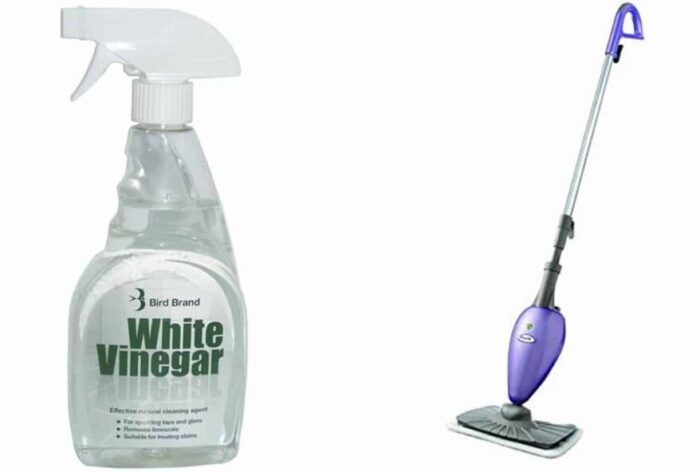If you’re looking for an easy, natural way to clean your floors, a steam mop is the perfect choice. And while steam mops are great tools on their own, the addition of a bit of vinegar can take your cleaning routine to the next level. But how much do you need? Let’s explore how much vinegar you should use and why it’s an important part of your steam mop cleaning arsenal.
Why Use Vinegar With Your Steam Mop?
Vinegar is a great all-purpose cleaner that not only does an excellent job of getting your floors clean, but also helps to sanitize them as well.
It’s also completely natural and free from harsh chemicals which makes it safe for use around pets and small children.
Additionally, vinegar can help reduce the amount of bacteria on your hard surfaces, making it the ideal choice for those looking for a safe and effective cleaner that won’t leave behind any toxic residue.
Foremost, it can help kill germs and bacteria on your floors without the use of harsh chemicals. This makes it an ideal choice for households with small children or pets who might be exposed to chemical residues left behind by traditional cleaners.
Additionally, vinegar can help reduce odors caused by pet accidents or food spills while freshening up your floors at the same time.
How Much Vinegar Should I Use?
When using vinegar with your steam mop, it’s important to get the ratio right so that you don’t damage your floors or create too much residue.
For most types of tile or stone flooring, adding 1/4 cup of vinegar per gallon of water should be more than enough to get your floors sparkling clean without leaving behind an unpleasant odor or sticky residue.
Additionally, if you find that the solution isn’t strong enough for particularly dirty surfaces or extremely tough stains, you can add up to 1/2 cup per gallon of water depending on what type of surface you are cleaning.
However, it’s important to remember that too much vinegar could potentially damage some types of flooring materials so always start with less and increase as needed.
How To Use Vinegar With Your Steam Mop
Once you’ve decided how much vinegar to use, the next step is to fill your steam mop with a mixture of warm water and the desired amount of vinegar. Then, simply follow your steam mop instructions for how to properly clean your floors.
For best results, it’s important to start at one corner of the room and work your way out. This will help ensure that all of the surfaces are properly sanitized without leaving behind any spots or streaks.
It’s also important to make sure the steam mop is set to the correct temperature for the type of flooring you are cleaning, as too hot of a temperature can cause damage over time.
Finally, when you’re done cleaning, make sure to dry the surface thoroughly with a clean cloth or mop head. This will help ensure that all of the vinegar residue is removed and your floors are left sparkling clean!
For extra tough stains or odors, you may need to add more vinegar than water for maximum effect.
What Type Of Vinegar Should I Use?
When choosing which type of vinegar to use with your steam mop, it’s best to stick with white distilled vinegar since this type is milder than other varieties such as apple cider vinegar or balsamic vinegar and therefore less likely to leave behind residue or cause damage to delicate surfaces such as wood or laminate flooring. Plus, white distilled vinegar is usually more affordable than its more specialty counterparts making it easier on both your wallet and your floors!
Conclusion:
Adding a bit of white distilled vinegar can take any steam mop cleaning routine from good to great! But when using this natural cleaner always make sure you know exactly how much you need for each type of surface in order to ensure that you don’t damage them in the process—usually 1/4 cup per gallon should do the trick! Remember this helpful tip next time you’re ready to break out the steam mop—you won’t regret it!

